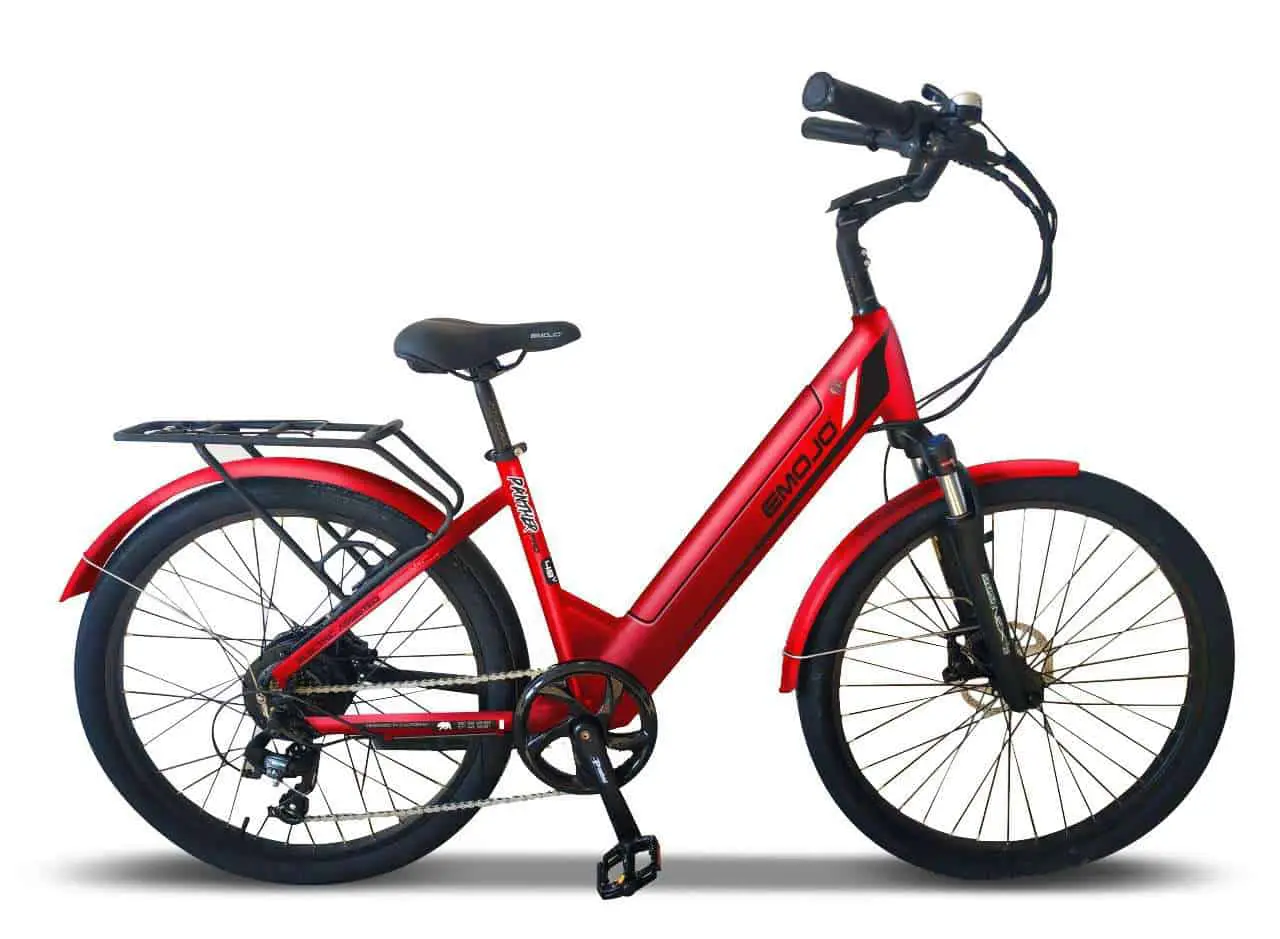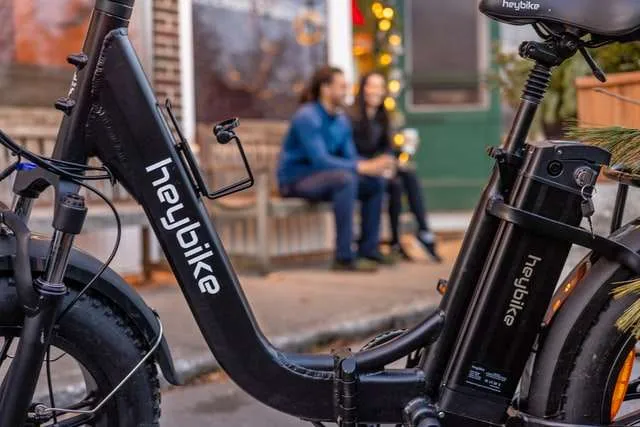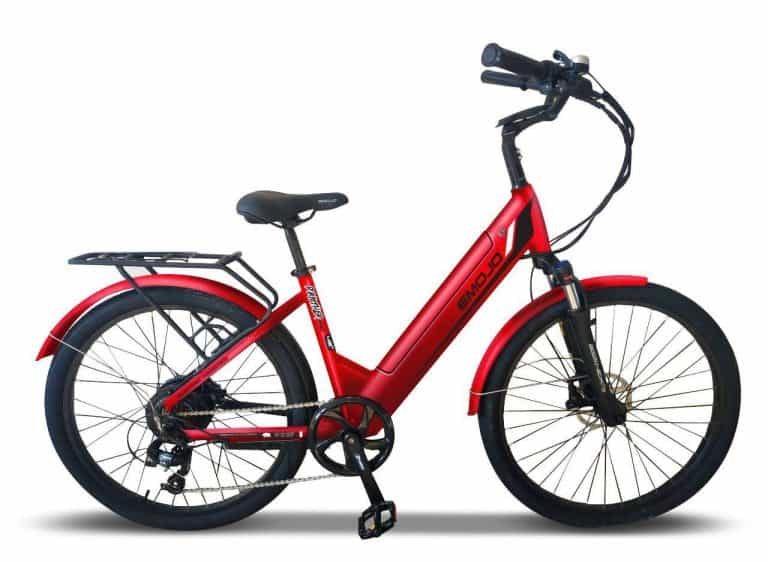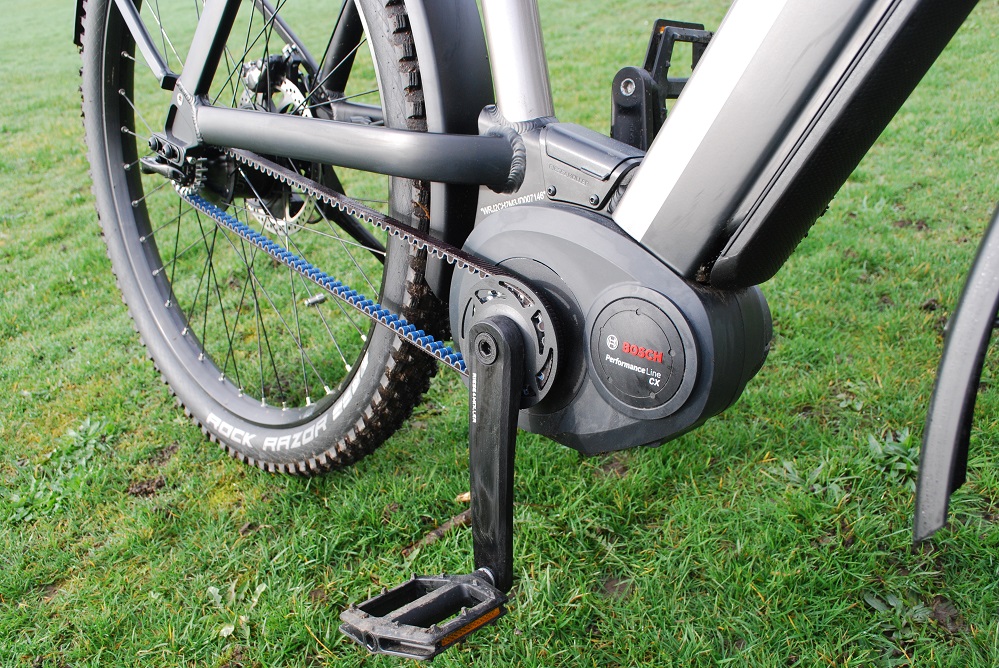What is an eBike Weight Limit and Why Does it Matter?
An eBike weight limit is the maximum recommended weight capacity that an eBike can safely accommodate, including the rider, luggage, and any additional accessories. Adhering to this limit is crucial for ensuring safety, optimal performance, and the longevity of the eBike. Exceeding the eBike weight limit can lead to various issues, such as reduced stability, accelerated wear and tear on components, and potential damage to the frame or suspension system. In some cases, it may even compromise the rider’s safety, increasing the risk of accidents or injuries.

Factors Influencing eBike Weight Limits
Several factors contribute to determining the weight limit of an eBike, each playing a significant role in ensuring a safe and enjoyable riding experience. These factors include frame material, wheel size, suspension, and motor capacity. By understanding these factors, riders can make informed decisions when selecting an eBike that meets their specific needs and preferences.
Frame Material
The frame material of an eBike significantly impacts its weight limit. Stronger and more durable materials, such as aluminum or steel, can support higher weight capacities compared to lighter materials like carbon fiber. Aluminum alloy frames are a popular choice for their balance between strength, weight, and cost-effectiveness.
Wheel Size
Larger wheels generally offer higher weight limits than smaller wheels due to their increased stability and load-bearing capabilities. For instance, eBikes with 26-inch or 28-inch wheels often have higher weight limits than those with 20-inch wheels. However, this is not a universal rule, as other factors like frame design and material also play essential roles in determining the overall weight limit.
Suspension
Suspension systems can affect an eBike’s weight limit by redistributing the rider’s weight and absorbing shock. High-quality suspension systems can support more weight, providing a smoother and safer ride for heavier riders. On the other hand, eBikes without suspension or with lower-quality suspension may have lower weight limits due to reduced load-bearing capabilities.
Motor Capacity
The motor capacity of an eBike can also influence its weight limit. More powerful motors can handle heavier loads, allowing for higher weight limits. However, it is essential to consider that increased motor capacity may also result in higher energy consumption and faster battery depletion. Therefore, riders should strike a balance between motor power and weight limit requirements when selecting an eBike.

Typical Weight Limits for Different Types of eBikes
Understanding the typical weight limits of various eBike categories can help riders make informed decisions when selecting an eBike that meets their specific needs and preferences. Common eBike categories and their respective weight limit ranges include:
City eBikes
City eBikes are designed for urban environments and typically have weight limits between 220 and 330 pounds (100 to 150 kilograms). These eBikes often feature lightweight frames, narrow tires, and limited suspension, making them agile and efficient for commuting and short-distance travel.
Mountain eBikes
Mountain eBikes are built for off-road adventures and usually have weight limits between 265 and 350 pounds (120 to 160 kilograms). These eBikes often feature robust frames, wide tires, and advanced suspension systems to handle rough terrains and heavier loads.
Cargo eBikes
Cargo eBikes are designed to carry heavy loads and have weight limits ranging from 350 to 660 pounds (160 to 300 kilograms). These eBikes often feature sturdy frames, large cargo areas, and powerful motors to accommodate the additional weight and ensure safe and enjoyable rides.
Folding eBikes
Folding eBikes are compact and portable, with weight limits between 220 and 265 pounds (100 to 120 kilograms). These eBikes are ideal for commuters with limited storage space, as they can be easily folded and transported on public transportation or in vehicles.
Examples of specific models and their respective weight limits include:
- Rad Power Bikes RadCity Step-Thru: 275 pounds (125 kilograms)
- Trek Verve+ 3: 300 pounds (136 kilograms)
- Riese & Müller Load 60: 440 pounds (200 kilograms)
- Brompton Electric M6L: 275 pounds (125 kilograms)
By understanding the typical weight limits of various eBike categories, riders can select an eBike that not only meets their weight requirements but also aligns with their intended use and personal preferences.

How to Determine Your Ideal eBike Weight Limit
When selecting an eBike, it’s crucial to consider the eBike weight limit to ensure a safe and enjoyable riding experience. To determine your ideal eBike weight limit, consider the following factors:
Body Weight
Your body weight is the primary factor in determining the appropriate eBike weight limit. As a general rule, the eBike’s weight limit should be at least 150% of your body weight. This margin allows for additional weight from cargo, accessories, or other unforeseen factors. For example, if you weigh 200 pounds (90 kilograms), you should look for an eBike with a weight limit of at least 300 pounds (136 kilograms).
Fitness Level
Your fitness level also plays a role in determining the ideal eBike weight limit. More experienced riders may feel comfortable on eBikes with lower weight limits, while beginners or those with lower fitness levels may prefer eBikes with higher weight limits for added stability and safety. Consider your physical abilities and comfort level when selecting an eBike.
Intended Use
The type of riding you plan to do will influence the ideal eBike weight limit. For instance, if you intend to use your eBike for commuting with heavy cargo, you’ll need an eBike with a higher weight limit than if you were using it for leisurely rides in the park. Ensure the eBike’s weight limit aligns with your intended use and any additional weight you plan to carry.
Tips for Selecting an eBike
- Research various eBike categories and their typical weight limits.
- Compare specific models and their respective weight limits.
- Consider eBikes with adjustable components, such as suspension and brakes, to accommodate different weight requirements.
- Read customer reviews and testimonials to gauge the eBike’s performance and durability under various weight conditions.
By carefully considering your body weight, fitness level, and intended use, you can select an eBike with a weight limit that meets your specific needs and preferences. Adhering to the eBike’s weight limit ensures a safe, enjoyable, and long-lasting riding experience.

Assessing the Weight Capacity of Existing eBikes
To ensure a safe and enjoyable riding experience, it’s essential to be aware of your eBike’s weight limit. Understanding the weight capacity of your existing eBike can help you avoid potential hazards and maintain the eBike’s performance and longevity. Here’s how to determine the weight limit of your eBike:
Manufacturer’s Specifications
The easiest way to find your eBike’s weight limit is to refer to the manufacturer’s specifications. This information is typically available in the user manual, on the eBike’s frame, or on the manufacturer’s website. Always adhere to the weight limit provided by the manufacturer, as it is based on extensive testing and ensures the eBike’s safe operation.
Components and Design
If you cannot find the weight limit in the manufacturer’s specifications, you can estimate it by considering the eBike’s components and design. Factors that influence an eBike’s weight limit include:
- Frame material: Stronger materials, such as steel or aluminum, can support higher weight limits.
- Wheel size: Larger wheels can accommodate more weight than smaller ones.
- Suspension: Full-suspension eBikes typically have higher weight limits than hardtail or rigid eBikes.
- Motor capacity: More powerful motors can handle greater loads.
Risks of Exceeding the Weight Limit
Exceeding the eBike’s weight limit can lead to various risks, such as:
- Reduced stability and control, increasing the likelihood of accidents.
- Premature wear and tear on components, leading to costly repairs or replacements.
- Decreased range and performance, as the eBike must work harder to move the additional weight.
- Potential voiding of the manufacturer’s warranty.
By being aware of your eBike’s weight limit and adhering to it, you can enjoy a safe and enjoyable riding experience. Always consult the manufacturer’s specifications for the most accurate information regarding your eBike’s weight capacity.

Strategies for Riding an eBike Within Its Weight Limit
To ensure a safe and enjoyable riding experience, it’s crucial to adhere to your eBike’s weight limit. By following several strategies, you can optimize your riding style and enhance stability and safety. Here are some practical tips for riding an eBike within its weight limit:
Distribute Weight Evenly
Proper weight distribution is essential for maintaining balance and control. Place heavy items, such as bags or backpacks, in the eBike’s cargo area or use pannier racks to distribute weight evenly on both sides. Avoid overloading the front or rear rack, as this can negatively impact handling and stability.
Adjust Riding Style
Modify your riding style according to your eBike’s weight limit. For example, if your eBike has a lower weight limit, avoid aggressive maneuvers, such as sharp turns or sudden stops. Instead, maintain a steady speed and use gradual braking to ensure a safe and comfortable ride.
Use Accessories to Enhance Stability
Consider using accessories designed to improve stability and safety, such as wider handlebars, which offer better control, or fenders, which protect against mud and debris. Additionally, installing a kickstand can help support the eBike when loading or unloading cargo, reducing strain on the frame and components.
Benefits of Adhering to the Weight Limit
By adhering to your eBike’s weight limit, you can enjoy several benefits, including:
- Improved safety and stability, reducing the risk of accidents.
- Increased longevity of components, as excessive weight can lead to premature wear and tear.
- Optimal performance, as eBikes designed for specific weight ranges can provide better acceleration, range, and hill-climbing capabilities.
By following these strategies, you can make the most of your eBike while ensuring a safe and enjoyable riding experience. Always be aware of your eBike’s weight limit and adhere to it to maintain the eBike’s performance and longevity.

Upgrading or Modifying Your eBike to Accommodate Higher Weight Limits
If you find that your eBike’s weight limit does not meet your needs, you may consider upgrading or modifying its components to accommodate a higher weight capacity. However, it’s essential to be aware of the potential risks and drawbacks associated with these modifications. Here are some options to consider:
Reinforcing the Frame
One way to increase an eBike’s weight limit is by reinforcing the frame. This can be done by adding bracing or support structures to critical areas, such as the joints or downtube. While this may provide additional strength, it can also add weight to the eBike, negatively impacting its performance and maneuverability. Additionally, improperly reinforcing the frame can lead to structural issues, reducing the eBike’s overall safety and longevity.
Installing Stronger Wheels
Upgrading to stronger wheels can help support a higher weight capacity. Look for wheels with larger diameters and wider rims, as these can better distribute weight and provide increased stability. Additionally, consider using high-quality spokes and reinforced hubs to ensure durability and longevity. However, stronger wheels may also add weight to the eBike, affecting its performance and handling.
Adding Suspension Components
Installing suspension components, such as front forks or rear shocks, can help absorb shock and improve the eBike’s ability to handle heavier loads. This can be particularly beneficial for riders who frequently carry cargo or ride on rough terrain. However, suspension components can add weight and complexity to the eBike, increasing maintenance requirements and potentially affecting its overall performance.
Potential Risks and Drawbacks
Modifying an eBike to accommodate a higher weight limit can have several risks and drawbacks, including:
- Altered center of gravity, which can negatively impact handling and stability.
- Increased strain on components, leading to premature wear and tear.
- Reduced performance, as added weight can affect acceleration, range, and hill-climbing capabilities.
- Potential voiding of the manufacturer’s warranty, as modifications may not be covered under the original terms.
Before modifying your eBike, carefully consider the potential risks and drawbacks. In some cases, it may be more practical to explore alternative eBike solutions, such as cargo eBikes or trike eBikes, which are specifically designed to accommodate heavier riders and loads.

Alternatives to Traditional eBikes for Heavier Riders
For heavier riders who require an eBike with a higher weight capacity than traditional models offer, alternative eBike solutions can provide a safer and more enjoyable riding experience. Here are some options to consider:
Cargo eBikes
Cargo eBikes are designed to carry heavy loads, making them an excellent option for riders who need additional support. These eBikes often feature reinforced frames, larger wheels, and powerful motors to accommodate the extra weight. Some cargo eBikes even come equipped with built-in cargo carriers, allowing riders to transport groceries, tools, or other items securely. Examples of cargo eBikes with high weight limits include the Tern GSD and the Rad Power Bikes RadWagon.
Trike eBikes
Trike eBikes, also known as three-wheel eBikes, offer increased stability and support compared to traditional two-wheel models. Their three-wheel design reduces the risk of tipping over, making them an excellent option for heavier riders who may feel uncomfortable on a standard eBike. Additionally, trike eBikes often have higher weight limits due to their robust frames and reinforced construction. Popular trike eBike models include the eWheels EW-29 and the Addmotor Motan M-360.
Custom-Built eBikes
For riders who require a truly tailored solution, custom-built eBikes can be designed and manufactured to meet specific weight and performance requirements. By working with a professional eBike builder or manufacturer, heavier riders can create a bike that is both safe and enjoyable to ride. Custom-built eBikes can be outfitted with high-capacity batteries, reinforced frames, and specialized components to accommodate heavier loads and provide a comfortable riding experience.
When considering alternative eBike solutions, it’s essential to keep safety, performance, and longevity in mind. By selecting an eBike with a high weight limit and features designed to support heavier riders, you can enjoy a more comfortable and enjoyable riding experience. For more information on eBike weight limit considerations, refer to our comprehensive guide.


